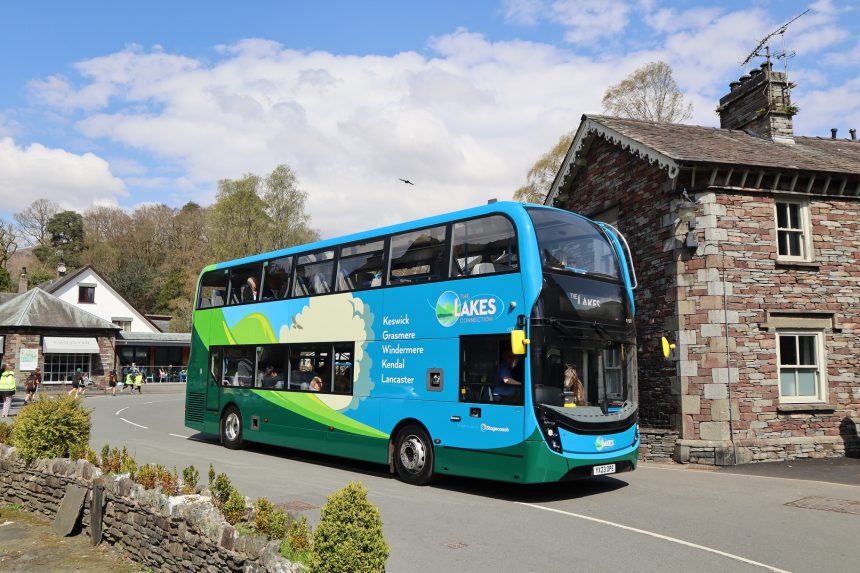Improved bus services, reduced congestion and upgraded public transport infrastructure will be among many claimed fruits of a £4.7 billion, seven-year Local Transport Fund (LTF) settlement for the North of England and the Midlands announced by the government.
It will go to local transport authorities (LTAs) and is part of the Network North approach to redistribution of funds released by part-cancellation of HS2. The North of England will take £2.5 billion and the Midlands £2.2 billion, with the LTF specifically for areas that fall outside the City Region Sustainable Transport Settlement (CRSTS) mechanism.
While public transport is key to LTF spending, the government says that the fund is intended to be spent “on the transport projects that matter most to… communities.” Roadbuilding, pothole repairs, electric vehicle charge points and many other areas of work can fall under its scope.
The LTF sums (listed below) follow an earlier and separate allocation of £1 billion of Network North money to improve bus services in the same areas. The first £150 million of that will come in FY2024/25 via the Bus Service Improvement Plan mechanism.
LTF payments will be released from 2025 and run to 2032. The Department for Transport (DfT) will publish “advice” to LTAs on how to develop what is says will be “ambitious plans” to improve local transport infrastructure.

Authorities in receipt will be held to account to ensure that the money is spent promptly and effectively. Their delivery plans will be published. DfT says that the £4.7 billion “will be on average at least nine times more than these LTAs currently receive through the local integrated transport block,” which currently funds transport improvements.
In addition, DfT notes that the Local Transport Fund is the first transport budget to be targeted at smaller cities, towns, and rural areas. Prime Minister Rishi Sunak says the approach represents “levelling up in action.”
LTF allocations will allow areas that are not eligible for CRSTS to “now drive forward similar infrastructure improvements,” DfT adds. Future CRSTS funding pots have already been increased off the back of the HS2 part cancellation, it says.
All LTAs in the North of England and the Midlands will now have long-term Network North funding settlements. LTF monies are focused there “because the majority of HS2 savings are specifically from those regions,” DfT adds. £6.5 billion in savings from HS2 at its Euston terminus in London will be spread across “every other region in the country,” it claims.
LTF seven-year allocations by LTA area are as follows:
Blackburn with Darwen: £116,911,000
Blackpool: £120,824,000
Cheshire East: £180,716,000
Cheshire West and Chester: £168,399,000
County Durham: £72,844,000*
Cumberland: £148,747,000
East Riding of Yorkshire: £168,269,000
Herefordshire: £101,851,000
Kingston upon Hull: £161,146,000
Lancashire: £494,400,000
Leicester: £159,559,000
Leicestershire: £238,154,000
Lincolnshire: £262,339,000
North East Lincolnshire: £119,726,000
North Lincolnshire: £118,189,000
North Northamptonshire: £149,208,000
Rutland: £49,341,000
Shropshire: £136,443,000
Staffordshire: £285,903.000
Stoke-on-Trent: £133,994,000
Telford and Wrekin: £107,018,000
Warrington: £121,251,000
Warwickshire: £203,717,000
West Northamptonshire: £162,831,000
Westmorland and Furness: £128,909,000
Worcestershire: £209,642,000
York and North Yorkshire Combined Authority: £379,670,000.
*County Durham has a devolution deal with the North East Combined Authority (NECA), but it does not provide for additional CRSTS funding from NECA’s current settlement. Durham will receive CRSTS2 funding as part of NECA’s allocation from FY2027/28 onwards.



























